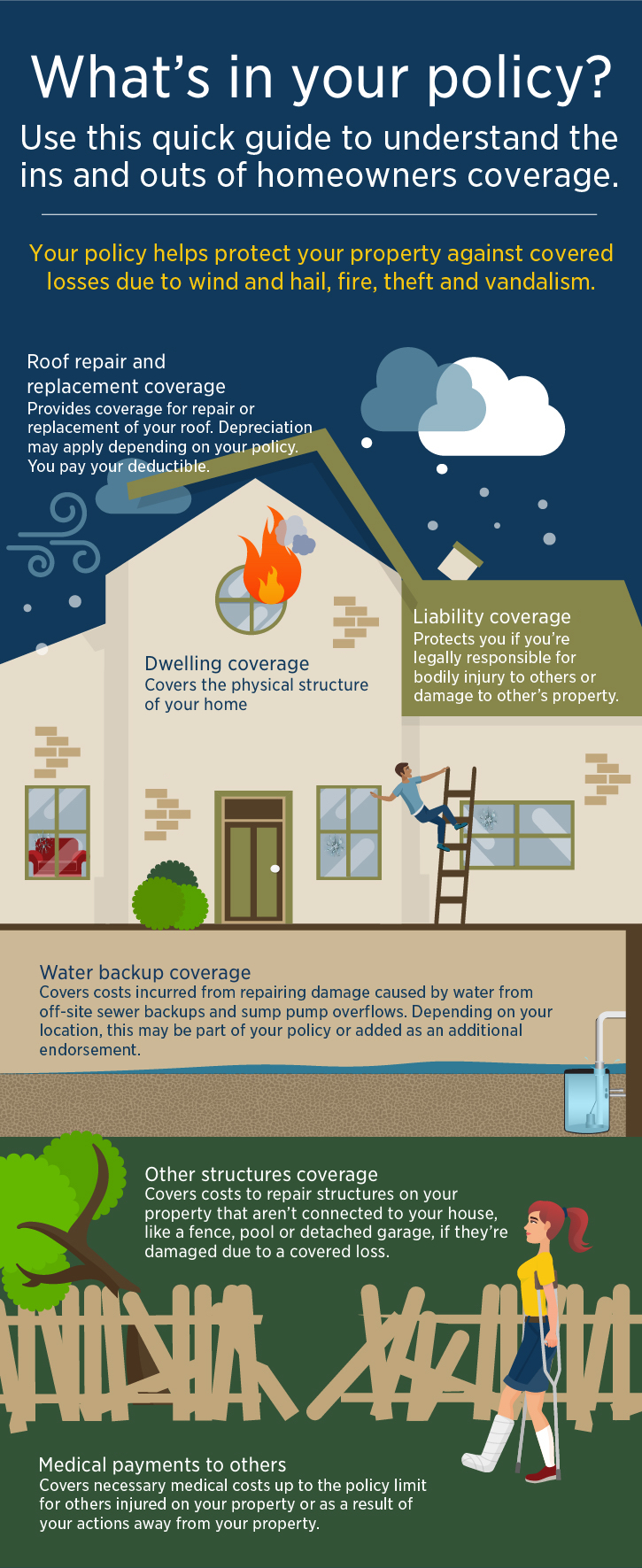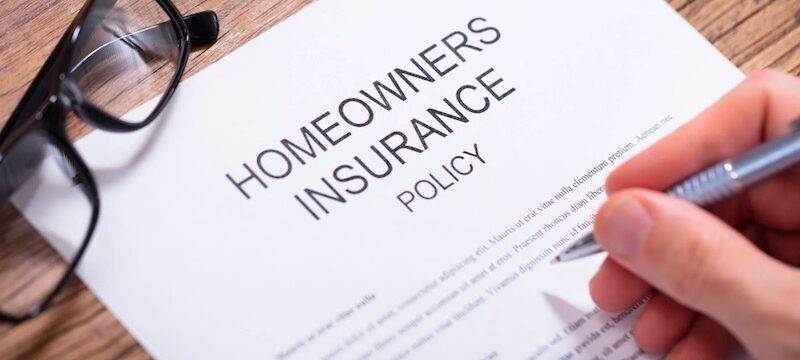Home insurance is a type of insurance that covers the structure of your home and its contents against risks such as fire, theft, and natural disasters.

Credit: http://www.usaa.com
Importance Of Home Insurance Coverage
When protecting your home, having comprehensive Home Insurance Coverage is essential. It offers peace of mind and financial security in case of unforeseen events.
Protection Against Property Damage
Home Insurance provides coverage for damages to your property caused by fire, theft, or natural disasters. It helps repair or replace your home and belongings.
Liability Coverage For Accidents
With Home Insurance, you are protected if someone is injured on your property. Liability coverage helps with medical expenses and legal fees.
Dwelling Coverage
Dwelling coverage in home insurance includes essential protection for the physical structure of your home, including walls, roof, floors, and built-in appliances. It ensures you’re financially covered in case of damage or destruction caused by covered perils like fire, storms, or vandalism.
Coverage For Home Structure
When it comes to home insurance, dwelling coverage is a critical aspect to consider. Dwelling coverage protects the structure of your home and its attached components from covered perils such as fire, theft, vandalism, or certain natural disasters. It typically includes the walls, roof, floors, and foundation of your home. In addition, it may cover features like built-in appliances, plumbing, and electrical systems. It’s important to note that the amount of dwelling coverage you need should be based on the cost to rebuild your home, not its market value. Insurance companies often require a minimum dwelling coverage limit, but you may want to consider getting coverage that exceeds this amount to ensure you are adequately protected.Additional Structures
In addition to the main dwelling, many homeowners have other structures on their property that need coverage. These structures can include detached garages, sheds, fences, and even guest houses. Having insurance coverage for these additional structures is essential, as they can also be vulnerable to damages from things like severe weather conditions, accidents, or theft. When determining the coverage amount for additional structures, keep in mind that it should be a percentage of the dwelling coverage limit. This helps ensure that you have enough coverage to repair or rebuild these structures if they are damaged or destroyed by a covered peril. Remember to include any upgrades or improvements you have made to these structures when calculating the coverage amount. To summarize, dwelling coverage is crucial for protecting the structure of your home and its attached components. In addition, it’s important not to overlook coverage for additional structures on your property. By understanding the different aspects of dwelling coverage and additional structures, you can ensure that your home insurance policy provides adequate protection for your valuable assets.Personal Property Coverage
When you’re considering home insurance, it’s important to understand the extent of protection it offers for your personal belongings. Personal property coverage is a significant aspect of your insurance policy, ensuring that your possessions are safeguarded in case of damage or theft.
Coverage For Belongings
Personal property coverage in your home insurance typically includes coverage for your personal belongings such as furniture, clothing, electronics, appliances, and other items within your home. This coverage extends to not only the items within your home but also those in temporary storage or off-premises, like when you’re traveling, for instance.
Special Items Coverage
Special items coverage is an essential component of personal property coverage in home insurance. It ensures that valuable possessions such as jewelry, antiques, artwork, and other high-value items are adequately protected. It’s important to declare and itemize these special items to your insurance provider to ensure they are fully covered in the event of loss or damage.
Liability Coverage
Liability coverage in home insurance provides protection in the event of a lawsuit or claim against you for bodily injury or property damage suffered by others while on your property. It is an essential component of a home insurance policy, offering financial security and peace of mind.
Protection For Legal Costs
Liability coverage includes protection for legal costs that may arise if you are sued for an incident that occurred on your property. This encompasses legal representation, court fees, and other related expenses.
Guest Injuries Coverage
Another key aspect of liability coverage is guest injuries coverage. This provides financial protection in the event that a guest sustains an injury while visiting your property, such as a slip-and-fall accident.
Additional Living Expenses
When unexpected events like natural disasters or accidents damage your home, home insurance helps cover the costs of repairs and replacements. In such situations, Additional Living Expenses coverage becomes essential to assist you with temporary accommodation and increased daily expenditures.
Coverage For Temporary Housing
If your home becomes uninhabitable due to a covered peril, your insurance policy can include provisions for the costs of temporary housing. This coverage ensures you have a place to stay while your home is being repaired or rebuilt.
Food And Transportation Costs
In addition to temporary housing, Additional Living Expenses coverage may also cover increased food and transportation expenses. This helps you maintain your normal standard of living while your home is being restored.
:max_bytes(150000):strip_icc()/does-homeowners-insurance-cover-roof-replacement-v2-e0e8219dfb9c4dceabe765b0a03768a6.jpg)
Credit: http://www.investopedia.com
Natural Disasters
When it comes to home insurance, it is essential to consider the potential risks posed by natural disasters. These catastrophic events can cause significant damage to your home and belongings, leaving you with costly repairs and losses. To ensure that you are adequately protected, it is crucial to include specific coverage for natural disasters in your home insurance policy.
Flood Insurance
Floods can occur due to heavy rain, hurricanes, or even a burst water pipe. Unfortunately, standard home insurance policies typically do not cover damages caused by floods. To protect your home and belongings from flood-related risks, it is important to obtain special flood insurance coverage. This type of insurance can help reimburse you for any flood-related damages, including structural damage, water damage to furniture or appliances, and mold remediation costs.
Earthquake Coverage
Living in an earthquake-prone area puts your home at risk of significant damage. Standard home insurance policies generally do not cover earthquake-related damages. To protect your property from the potential devastation caused by an earthquake, it is essential to have earthquake coverage. This specialized insurance will help cover repair or replacement costs for structural damage, as well as damage to personal belongings caused by earthquakes.
When considering what to include in your home insurance policy, considering natural disasters is crucial. By obtaining flood insurance and earthquake coverage, you can ensure that you are adequately protected against the financial implications of these catastrophic events. Don’t leave your home and belongings vulnerable to the unpredictable forces of nature.
Policy Exclusions
Policy exclusions typically refer to certain items and situations that are not covered under a standard home insurance policy. It’s crucial to carefully review and understand these exclusions to ensure that your policy encompasses the necessary protections for your home and belongings.
These exclusions may include specific natural disasters, intentional damage, and high-value items.
Policy Exclusions Understanding Excluded Perils – Certain perils like earthquakes and floods are typically excluded from standard home insurance policies. – Exclusions are events or situations that are not covered by your insurance policy. – It’s crucial to understand what perils are excluded to avoid any surprises during a claim. Optional Coverage Add-Ons – You can purchase additional coverage for excluded perils through optional add-ons. – Consider adding earthquake or flood insurance to protect your home comprehensively. – Optional add-ons ensure you have coverage for specific risks that are not included in your standard policy.Reviewing And Updating Coverage
When it comes to protecting your home, it’s crucial to regularly review and update your home insurance coverage to ensure you are adequately protected. Reviewing and updating your coverage is a proactive way to adjust your policy based on changes in your home, lifestyle, or financial situation. By conducting regular policy reviews and adjusting coverage levels, you can have peace of mind knowing that you are adequately insured against potential risks.
Regular Policy Reviews
Regular policy reviews are essential to keep your home insurance coverage up to date. Schedule a yearly review with your insurance provider to discuss any changes in your home or lifestyle that may warrant adjustments to your coverage. During this review, consider factors such as home improvements, renovations, or the addition of valuable assets to your property. It’s also important to review your liability coverage to ensure it aligns with your current financial situation and provides adequate protection.
Adjusting Coverage Levels
Adjusting coverage levels is a critical aspect of maintaining the effectiveness of your home insurance. Whether you’ve added a new room, upgraded your kitchen, or invested in high-value items, it’s important to adjust your coverage accordingly. By reassessing your coverage levels, you can avoid being underinsured or overpaying for unnecessary coverage. Stay in regular communication with your insurance provider to make modifications as needed, ensuring that your policy reflects the true value of your home and belongings.

Credit: http://www.harrisinsurance.com
Frequently Asked Questions Of What To Include In Home Insurance
What Does Home Insurance Cover?
Home insurance typically covers damage to the structure, personal belongings, and liability protection in case someone gets injured on your property.
How Much Home Insurance Do I Need?
The amount of coverage you need depends on your home’s value, location, and the value of your possessions. It’s important to ensure you have enough coverage for a complete rebuild if necessary.
What Is Not Covered By Home Insurance?
Typically, home insurance does not cover damage from floods, earthquakes, or poor maintenance. It’s also important to check for specific exclusions in your policy, such as certain types of personal property.
Conclusion
To ensure comprehensive home insurance coverage, remember to include essential aspects such as dwelling protection, personal property coverage, liability insurance, additional living expenses, and medical payments. Securing a policy that offers these important elements can provide peace of mind in the face of unexpected events like natural disasters, theft, or accidents.
Protect your most valuable asset – your home – by consulting with a reliable insurance provider and customizing a policy that meets your unique needs.



Leave a comment